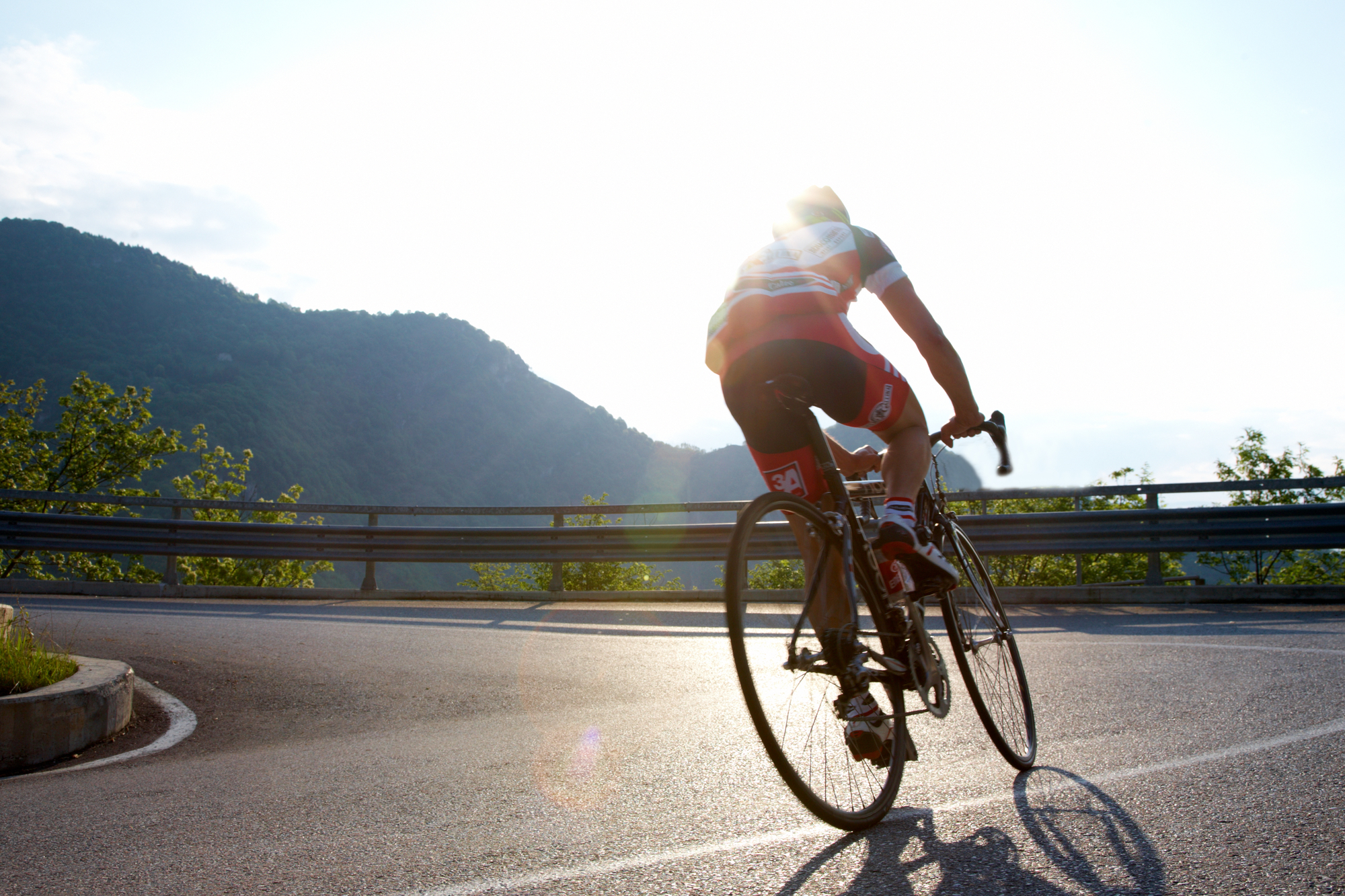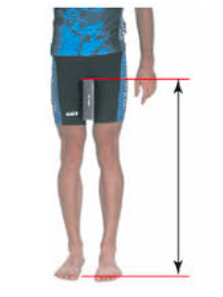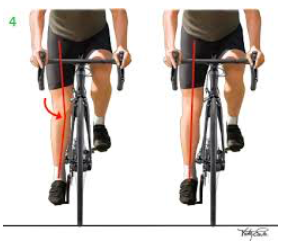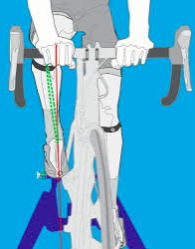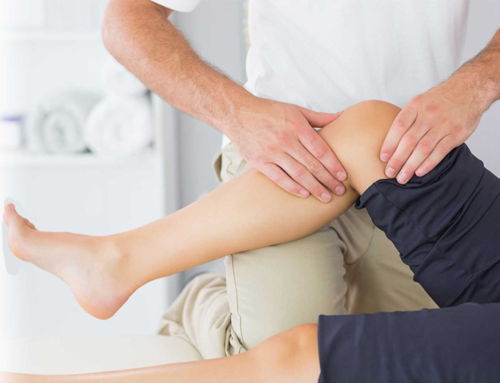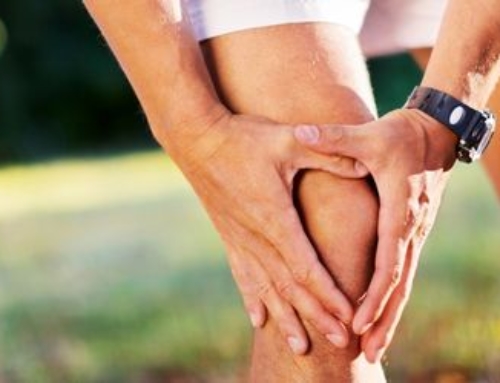The knee is the most commonly injured or painful joint in cyclists. There are a vast number of factors and variables that can affect the knee. The knee is an unsupported joint (it is not in contact with any part of the bike) and its serves to transfer large forces from the thigh to the foot, and eventually the pedal.
All factors of the bike set up, will affect the forces that transfer through the knee. Injuries occur when there is too much force traveling through the knee, when there are large changes in training load or abnormal distribution of force through the knee. Having said all this, cycling is actually a very safe form of exercise for the knee and is usually an integral part of most post-operative or management protocols for the knee.
In most clinical literature that I have read, I feel the problems of the cyclist’s knees have either been covered by very complicated biomechanical analysis that do not synthesise the information into useful practical application for cyclists or an oversimplified table of symptoms with very basic instructions on management.
I am aiming to provide an understanding for you to recognise and manage the common issues that I see in clinic which are directly related to the bike. In my experience unless the practitioner that you are seeing has a working knowledge of cycling and the biomechanics involved, and the knee issue is related to cycling, you will arrive at a generic diagnosis with the underlying cause of the knee pain remaining unresolved.
Persistent or recurrent issues with knee are one of main reasons people attend the cycle clinic for advice and the resolution is normally recognised with cycling analysis or just a conversation regarding bike set up and training load.
In a previous article, we have discussed the preferred knee extension angles at Bottom Dead Centre (BDC) position of 30∞-35∞, and flexion angles of no more than 110∞ at top dead (TDC) position.
Saddle Height
Riding a saddle that is too high, will cause pain in the back and very commonly on the lateral aspect of the knee. Pain on the lateral knee is caused by hamstrings or the Iliotibial band (ITB) having to overextend, I know first-hand that 99% of my clients have tight hamstrings, I know I do! Calf or Achilles tendon pain is also caused by the foot overextending at the bottom of the pedal stroke. If you think your saddle height is too high, some very easy methods to check are the ‘inseam formula’ (or the ‘LeMond’ method).
Inseam Formula (‘LeMond’ method)
Inseam height (cm) x 0.883 = predicted saddle height (cm)
This was a method created in the 1980’s by Greg LeMond along with his coach and was utilised by the professional peloton and amateur cyclists. The issue with this method and why it is no longer used, is because it does not allow for the fact that we are not all the same dimensions, in fact there is a wide variation in human body proportions; so wide in fact that I would only ever consider using this method as a rough guide.
Goniometry
A simple method if you have a turbo trainer and a helping hand. Simply measure your knee angle of extension in the BDC position, aim for it to be between 30∞- 35∞ and this would provide a much more accurate and bespoke objective measurement.
The third option here is to visit the Complete bike fit clinic and be fitted with our top end software, video analysis and expertise of our practitioners, as used by Team Ineos (formerly Team Sky), Trek/Segafredo, and Mitchelton/Scott world tour UCI (Union Cyliste Internationale) teams. The advantages of a tailored bike fit are highly evidenced in reducing injury, increasing power transfer and aerodynamic performance. All of these factors make you a better cyclist.
Knee Tracking
Knee tracking is the movement of the knee relative to the hip and the foot.
This for me is one of the most over-corrected aspects on a bike fit. If you watch any grand tour or professional cycling race and watch how cyclists’ knees are moving you will notice some moving in, some moving out and some doing very strange things. Most Bike fitters would seek to ‘fix’ this!
The long-held perception and ideal is that the hip, knee and foot should all be aligned in a lovely vertical line moving up and down like pistons in an engine. It makes sense that this uniform, flowing pattern would transfer force best through the knee and you would go faster. However, many studies have been conducted into this element of bike fit and the results remain inconclusive at best.
In fact, allowing the cyclist to adopt their natural style and position (so long as everything is set up correctly) is favoured within the literature. When trying to correct a cyclist in pursuit of the very appealing piston type movement, pain can be created, or performance can be lost. This is because, the knee tracking is usually a manifestation of that rider’s unique biomechanics, ability on a bike and injury history.
Despite the evidence supporting this, I am forever seeing people attending the complete bike fit clinic with ‘wedges’ or ‘shims’ to align the rider as straight and aesthetically ‘ideal’. These are extremely powerful interventions and should only be used in very unique situations. Furthermore, as a physiotherapist working in bike fit this is extremely frustrating, as it is a saleable commodity that is over-used to make money. So below I will attempt to highlight the common types of knee tracking and the adjustments that you can reasonably expect to make.
Knees-In
I am sure we have all seen this before in our friends or watching the professional peloton, a rider’s knees dropping inwards when pushing down on the pedal stroke. This is widely accepted to be due to the foot and forefoot ‘varus’ or overpronation. This is in turn causes the riders tibia to rotate on the femur as the leg pushes down the pedal stroke (knee extension).
The way to ‘correct’ this alignment would be to provide a shim or wedge to correct the pronation of the foot. Having worked as a physiotherapist for over 13 years I can assure everyone reading this that no-one has a perfect foot alignment. An isolated overpronation that causes this pedal stroke would be extremely rare and used only as a last resort.
My advice would be to analyse your off-bike stability and strengthen around the knee and hip. In clinic, we provide Hand Held Dynamometry to objectively test each muscle group and identify imbalance. Additionally, if you wear insoles in your trainers or daily footwear, consider transferring this across to your cycling shoes before applying anything to the pedal. These interventions will solve or provide reasons for the knees-in (varus) if causing pain. If this is not causing pain, embrace the style and keep cycling.
Elliptical Knee tracking
This is so common. When the knee slightly beds in on the downstroke and then away from the bike in the upstroke. There is nothing wrong with this style and some would argue that it employs greater hip flexor involvement in cycling. A thought that was disproved by Martin and Brown (2009) in a brilliant study conducted on joint specific power production.
This style is most likely caused by a lack of control through the core and causing the hips to externally rotate, or possibly the saddle being too high and a ‘bouncing’ appearance of the rider. Either way, no shims or wedges should be used here.
Knees out tracking
This unusual style is one that I observe mostly in new or less experienced cyclists commuting around London. Usually addressed, with the simple answer that the saddle is much too low, or they bought a bike that is much too small.
The other observation is those riders that are overweight and are trying to prevent their knees hitting their stomach.
It can also appear in cyclists that have hip pain and will naturally ‘unload’ the hip joint. This is definitely something that should be assessed by our physiotherapists and is usually resolved off the bike.
The final reason is that it can be from supinating foot biomechanics causing the loading of the femur to compensate outward. This biomechanical abnormality is rare, much less common than the pronating foot, and I have only ever used a shim or wedge in the pedal on two occasions in my career. Professional and expert fitting is absolutely necessary with this presentation.
Asymmetry of the knees
This is obvious for anyone to observe, and actually is more common than you would think if you are looking out for it in club rides. You will rarely see this in professional ranks, as it is almost always caused by asymmetry in the rider, whether that is a leg length discrepancy, large muscle imbalance, or a hip abnormality.
On more occasions than you would think, I have also seen people riding with asymmetry because their saddle is not straight.
Related knee conditions and blogs for cyclists from our specialists
Our highly experienced team of expert clinicians have written a selection of blogs on various knee conditions and treatment methods for knee pain, blogs specific to cyclists and some stories from patients that came to us seeking relief from their knee pain. Please take a look at any of the following links and get in touch with us if you think you may require treatment.
- Osteoarthritis of the knee
- Baker’s cyst – swelling on the back of the knee
- ITB Friction Syndrome
- Meniscal cartilage tears
- Patellofemoral Osteoarthritis
- Prepatellar bursitis – known as Housemaids’ knee
- Patellar tendinopathy – known as Jumper’s knee
- Fat pad impingement
- Pes anserine bursitis
- Longer lasting pain relief for knees – Triamcinolone Hexacetonide
- PRP injections for knee osteoarthritis
- Hyaluronic acid injections for knee osteoarthritis
- Will my knee injection hurt?
- Clare’s story – a 35 year old runner from London with knee pain
- John’s story – a 50 year old golfer from Kent
Other blogs for Cyclists
- Setting up your peloton
- How high should the saddle be?
- Cycle clinic / bike fit home
- Complete bike fit and cycle clinic
- The difference between pros bike and mine
- Hip pain in cyclists
- Top 3 cycling injury prevention exercises
- Top 3 tips for bike fit
- Cycle – getting in the gym
To make an appointment please call 020 7482 3875 or email info@comple-physio.co.uk.
Don’t let pain hold you back, book now!


